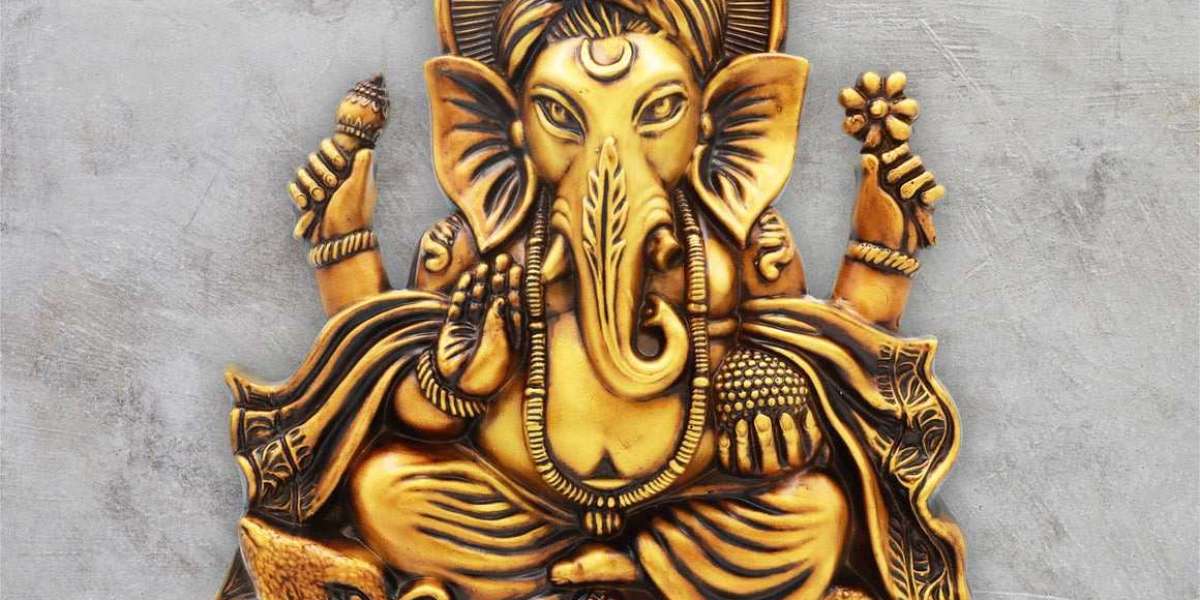Lord Ganesha, one of the most revered deities in Hindu mythology, is often depicted riding a small mouse, known as Mushak. This imagery, rich in symbolism and cultural significance, offers profound lessons and insights into the spiritual and philosophical dimensions of life. The combination of Lord Ganesha, the remover of obstacles, and Mushak, the seemingly inconsequential rodent, embodies a narrative that transcends mere iconography to impart wisdom on humility, strength, and the unity of opposites.
The Iconography of Ganesha
Lord Ganesha, with his elephant head and rotund human body, is a figure of immense significance in Hinduism. His elephant head symbolizes wisdom, understanding, and a discriminating intellect that one must possess to attain perfection in life. The large ears represent the capacity to listen more, while the small mouth signifies the importance of speaking less. His potbelly signifies the ability to digest all the good and bad in life.
Each element of Ganesha's iconography holds profound meaning, contributing to his role as the deity of intellect and wisdom, the remover of obstacles, and the patron of arts and sciences. However, one of the most intriguing aspects of his representation is his vahana (vehicle), the Mushak or mouse.
Mushak: The Humble Vahana
In Hindu mythology, the vahana is not merely a mode of transport for the gods but also symbolizes various attributes and qualities associated with the deity. Mushak, the mouse, is often seen as a creature of the night, small and insignificant, yet incredibly resilient and resourceful. Its ability to gnaw through obstacles and find its way through the smallest of spaces reflects persistence and the ability to overcome challenges, no matter how insurmountable they might seem.
The choice of Mushak as Ganesha's vahana is particularly significant. It represents the idea that even the smallest and most humble creatures have a role to play in the grand scheme of things. It signifies that true power and greatness lie in humility and the ability to recognize and harness the potential of the seemingly insignificant.
The Symbolism of the Union
The imagery of Ganesha riding Mushak brings together the grandeur of the elephant and the humility of the mouse, symbolizing the unity of opposites. This union represents the harmonious coexistence of strength and humility, wisdom and simplicity, power and gentleness. It teaches that true wisdom lies in the balance of these dualities.
In a broader sense, this imagery can be interpreted as a lesson in leadership and governance. It emphasizes that a true leader, symbolized by Ganesha, should be wise, compassionate, and powerful yet grounded, humble, and approachable, like Mushak. This balance is essential for overcoming obstacles and achieving success.
Philosophical Insights
From a philosophical perspective, the depiction of Ganesha on Mushak offers several profound insights. Firstly, it reminds us that no obstacle is too great to overcome if we approach it with wisdom and humility. Just as Mushak, with its small size, can navigate through the tiniest of spaces and gnaw through the hardest of barriers, we too can find solutions to our problems by being persistent and resourceful.
Secondly, it teaches us the importance of recognizing and valuing the contributions of every individual, regardless of their size or status. The partnership between Ganesha and Mushak exemplifies the idea that greatness is achieved not in isolation but through collaboration and mutual respect.
Finally, it highlights the importance of humility in the face of power. Despite his immense strength and wisdom, Ganesha chooses a humble mouse as his vehicle, underscoring the virtue of humility and the acknowledgment of one's limitations.
Cultural Significance
The depiction of Lord Ganesha on Mushak holds a special place in the cultural and religious practices of Hinduism. During festivals like Ganesh Chaturthi, elaborate idols of Ganesha riding Mushak are created and worshipped with great fervor. These celebrations not only honor the deity but also reinforce the values and lessons embodied in this imagery.
Moreover, the stories and legends surrounding Ganesha and Mushak are an integral part of Hindu mythology, passed down through generations. These tales often highlight the cleverness and loyalty of Mushak, reinforcing the idea that even the smallest creatures can possess great qualities.
Conclusion
The depiction of Lord Ganesha on Mushak is a powerful and evocative symbol in Hindu mythology, rich with layers of meaning and significance. It embodies the unity of strength and humility, the value of every individual, and the importance of wisdom and persistence in overcoming obstacles. As we delve into the symbolism of this imagery, we uncover timeless lessons that are as relevant today as they were in ancient times.
In a world that often equates greatness with power and status, the image of Ganesha riding Mushak serves as a poignant reminder that true greatness lies in wisdom, humility, and the recognition of the potential within every individual, no matter how small or seemingly insignificant. Through this profound symbolism, Lord Ganesha on Mushak continues to inspire and guide devotees, offering insights into the path of righteousness and the journey towards spiritual enlightenment.








